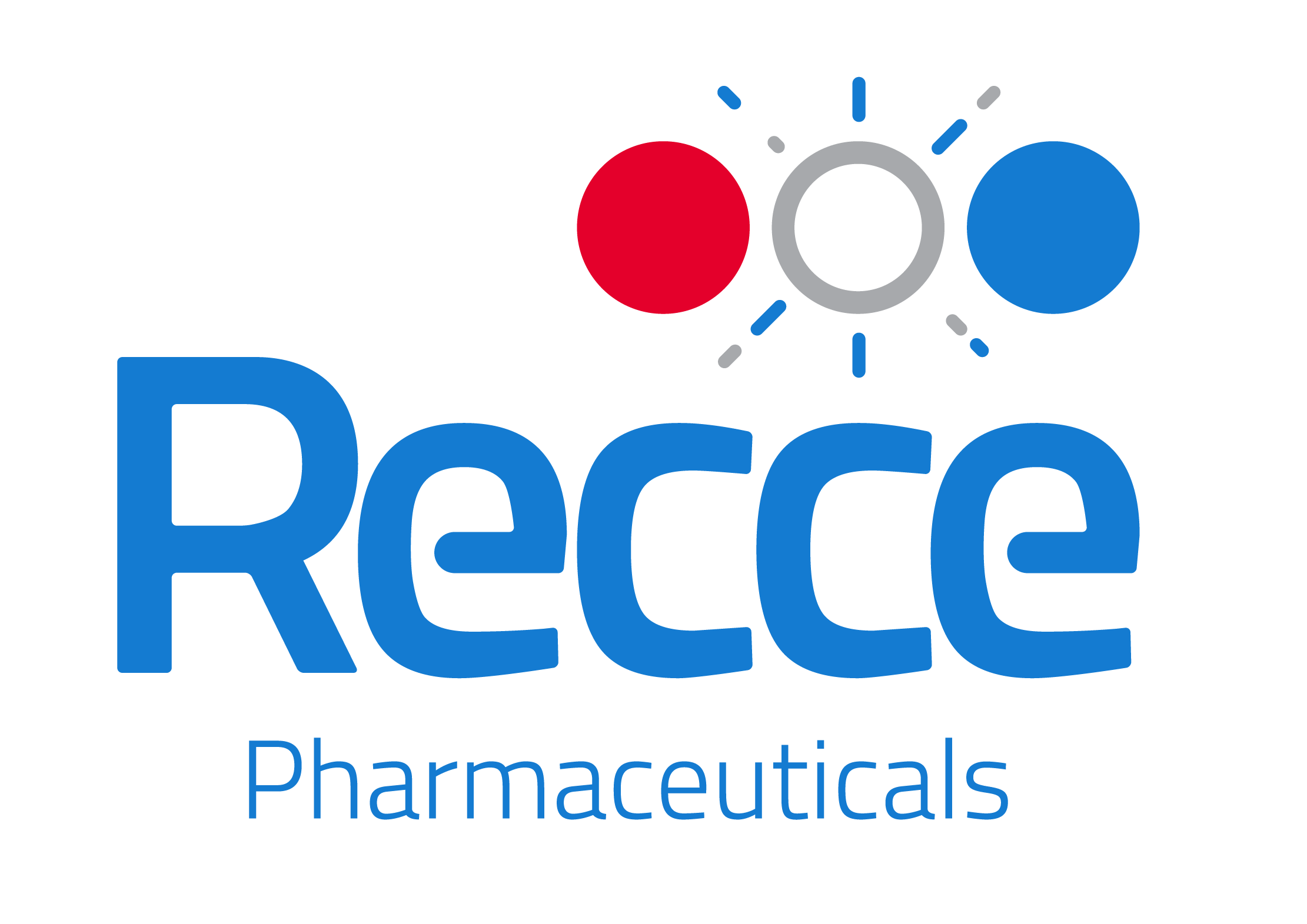SEP.EP.003.Video
Transcripts are auto-generated and may contain errors
Eric Bauer: [00:00:00] I see EMS agencies are so advanced that will blow your mind, right? Oh, well you’re in Seattle. Think about King County. They’re amazing. There are other agencies in the United States that are, that are like that, that are just cutting edge. They’re looking at data. They’re evaluating all that stuff. And then there’s other ones that they have no buy-in from administration, no investment on education, no medical direction involvement.
They’re just drawn a paycheck.
Nicole Kupchik: This is the sepsis spectrum, a podcast about antimicrobial resistance, sepsis, and how to expect the unexpected. In your practice.
I wanna read you this letter. It’s not entirely real, but the message is Dearest DMTs. I thought it was nothing serious, just the pain for my root canal. Maybe an infection, something I could sleep off while the antibiotics did their work, but it wasn’t. There were chills then. Silence. [00:01:00] Then you, I don’t remember your names, but I remember your eyes telling me something was wrong.
I remember the wind, the helicopter, the way my body shook. I remember your voices calm and steady as I faded in and out. You saw what many wouldn’t. Something spreading, something urgent. You didn’t wait. You called it in. Later they told me the minutes you saved were the reason I’m still alive now. I’m home still here.
Because you didn’t second guess because you paid attention. You saved me before I even knew I needed saving. I.
Hi everyone, and welcome to the sepsis spectrum. I’m Nicole Kupchik, critical care nurse, clinical nurse specialist, and your guide through the complicated and sometimes frustrating world of sepsis and antimicrobial resistance. Or as we like to call it, the [00:02:00] season microbial mysteries. On today’s episode, we’re going to talk about how to spot early signs of infection and sepsis out in the field, whether you’re responding to a 9 1 1 call, working in an outpatient setting or handling inter-facility transport.
We’re also going to break down what point of care tools can do in those critical first minutes and where they fall short. We’re also gonna talk about how antimicrobial resistance shows up in pre-hospital settings and the role EMS and Transport Pros can play in a MR and sepsis stewardship, or interestingly enough, the lack thereof.
We’re also gonna compare the biggest challenges across different hospital care environments and explore how better handoffs communication and teamwork can save lives. Now let’s dive in with someone whose name is synonymous with critical care in the field. Eric Bauer has been a trusted voice in emergency and critical care for over [00:03:00] 30 years as a CEO of Flight Bridge Ed, he’s helped shape how providers think about high stakes pre-hospital care, especially in the world of helicopter EMS.
A massively popular podcast. His work makes complex medicine for people who need it most. Let get b.
Welcome to the show, Eric Bauer. So Eric, I am so excited to chat with you. You’ve got a, an incredible CV and resume and, um, experience. Can you just tell the audience a little bit about yourself?
Eric Bauer: Yeah, I’m the CEO and founder of Flight Bridge. Uh, flight Bridge is a critical care education company that we founded, uh, really, uh, we were the first critical care pre-hospital podcast in the world back in 2012 when podcasting was really new and, uh, 34 years in [00:04:00] EMS 20 of those as a flight paramedic.
And, uh, I, I run the company now as, uh, still and, and work very little clinically. Um, but I get to travel all over the world and, and teach and, and meet people. Uh, and you know, our focus really is spans from EMT to, uh, physicians as far as, uh, education goes.
Nicole Kupchik: So one of the things I wanted to start off with is, okay, so let’s say you, you get a call and you’re responding in the prehospital setting.
What are you using to identify sepsis? What, what criteria, what physiologic parameters, like what are you looking for, uh, when you’re. Thinking maybe a patient septic.
Eric Bauer: Yeah. I think the, the big conversation is, is, is how well has the education, uh, is the education, what level of provider is responding? And obviously, you know, the majority of MS providers around the world are, are the US are [00:05:00] volunteers.
There are EMRs or EMT basics. And so, you know, they’ve had a. It’s kind of a crash course in those areas, but they don’t really understand the patho involved in sepsis. So recognition really isn’t there. It’s not their focus, their focus is more to treat what they see. Um, obviously when you get into a LS providers, paramedics, I think then now you have the ability to, to understand differential diagnosis and their, the training again, kind of guides, uh, looking for CS criteria.
And I know that that’s really our big focus is to be able to, uh, give them an idea of, Hey, is there, is there two or more surge criteria? And then moving them towards the, the right facility that can manage them. Uh, obviously I think one of the things that I try to focus on from an education standpoint, the two areas, number one, is respiratory rate, right?
And I really try to focus how sensitive that is and that any tachypnic patient greater than 20 is a sick patient until proven otherwise. And I think there’s a dogma out there, [00:06:00] or, or maybe some false teaching of anybody with a fast rate. It has anxiety, right? And, and trying to move away from. That mindset and looking at respiratory rate as an indication of, you know, a, a, a hyperdynamic response, a sympathetic response, you know, hypoxia is usually the reason.
And then, you know, do you have anything else that you can easily identify a temp or that heart rate is a little elevated, and then being able to say, Hey, this patient needs to go to a center that is gonna be able to manage them.
Nicole Kupchik: Well, can I just say thank you for stressing the respiratory rate? Um, so I work on the hospital side and that’s one thing I try to drill into hospital providers and nurses at the bedside is that, um, you know, we kind of joke around in the hospital side that I.
Uh, we make up the respiratory rate a lot of times. Right? And everyone’s a 16 or an 18. Right? But if you think about it, what’s happening in sepsis, sepsis is an issue. It’s complicated. We know that, [00:07:00] right? And patients have a lot of malperfusion. They end up. With a tic tissue, oxygen debt, and lactic acid levels rise.
And how do you get rid of acid? You blow it off. And I, you know, and truly like, um, when you look at up the chest of a patient who’s septic, they’re not breathing. 16, 16, 18 16. So I really appreciate that you’re focusing on the respiratory rate in, in the pre-hospital setting.
Eric Bauer: Well, I think it also comes back to, you know, the utilization in the, in the pre-hospital setting, which is the gold standard, is tidal CO2, and how, how much that’s used not only for ETT confirmation, but continual evaluation of hemodynamic status.
Right. And I think what I see when I teach at hospitals that is not adopted across all hospital systems. It’s really frustrating. I do a lot of medical malpractice evaluation and, and you know, you see a lot of sentinel events that could be prevented by just using Ental CO2, but [00:08:00] using it early as the sidestream nasal cannula and identifying, Hey, I.
Uh, you know, this rate is elevated. It’s not anxiety. It could be partial compensation. It’s, you know, it’s also low because maybe their hemodynamic status is poor. And so really focusing, we’ve spent a lot of time in, in our education focusing on not really a high entitled CO2. Hypercapnia is pretty easy.
Uh, it is what it is, but a low entit CO2 is that hidden gem that you see. A lot of new critical care providers make poor decisions, uh, and try to chase minute ventilation or slow their rate down or write in. And so I came up with a, an acronym called the three Ps of tidal, CO2, to really focus on not getting stuck on that rate, but using tidal CO2.
And then really quick, it’s just make sure they have a pulse, make sure they’re alive. Number two, what is, uh, their perfusion status? Do they have a map less than 65? And then number three, [00:09:00] what’s their pH? Are they in a partially compensated metabolic acidosis? And so really it’s number two and three that we focus on to not, not chase that number, but to focus on the underlying cause that endot is really, really reporting to you.
One of those two issues, or could be, could be either of them. Uh. Again, moving them towards definitive care where they can be managed, uh, with higher care.
Nicole Kupchik: Well, let’s, let’s dig into that just a tiny bit deeper. ’cause I actually, I, I appreciate EMS and how much you have embraced Entit, CO2, the hospitals. I don’t understand like why we are not embracing such an easy technology.
Truly. Uh, but there was a study published back in 2017 by Hunter Etal, where they looked at in the pre-hospital setting, two sirs. Suspicion of infection. And then of course, uh, they would add end tidal and if the end tidal was 25 or less, then they [00:10:00] would activate a septus alert bringing the HO patient into the hospital and they found that it was very predictive.
So in the, just can you just tell me, in the pre-hospital setting, like what end tidal value are you teaching pre-hospital providers to like say, oh, you know, this is something we really need to pay attention to.
Eric Bauer: Well, you said it perfectly, and I, you know, in the pre-show we kind of talked about this, uh, you know, I think, and maybe I was teaching it incorrectly, but we, we, a lot of times in our guidelines, uh, or protocols, you know, there’s the difference between guidelines and protocols, and I can dive into that.
Uh, protocols are very rigid. Guidelines are pretty gray, right? And you see more guidelines in the, a medical, uh, environment, but. Uh, using serves, whether it’s two serves, response criteria or Q SOFA guidelines, which was very popular in, you know, 2014 to 2018 from a, from a pre-hospital standpoint. And we, we found that there was a lot of.
False activations. And so we started teaching just what you [00:11:00] said. Well, let’s add two other surrogates. Let’s add intital, CO2 nasal cannula if it’s less than 25. And then LA lactate finger sticks in the field. If lactate is four or greater in the first hour. And that is pretty definitive. You have two servers or two Q sofa, which were very similar.
Uh, and then those other two criteria, and you were now more specific. And I think we had less false activations. ’cause I think we started seeing, at least in the areas that I were, I, I flew in. You saw, you know, it’s, it’s alarm fatigue. All these patients were being activated as sepsis and they weren’t right.
How many patients sit, got little old grandma that sits with a stalk less than a hundred, and maybe their rate is a little over 20, that doesn’t mean they’re in a sepsis response, right? So I think it gave, it gave a very, um, uh, focused assessment and, and made that more, uh, finite.
Nicole Kupchik: Yeah. I mean, ’cause let’s be honest, like if I were to go run up 10 flights of [00:12:00] stairs, I’d meet service criteria.
Right. You know? Right. Yeah. So, ’cause my heart rate would be fast and I’d be huffing and puffing. Yeah. You know, uh, and then even I think in the pre-hospital setting, asking that question, do you suspect an infection? I bet that’s going be challenging to answer.
Eric Bauer: It is. And I don’t know if, I don’t even think they’re thinking that that way.
I think they’re, they’re picking up on the criteria. Uh, and, and moving. But, but I, I’m, and I don’t wanna talk bad, but that’s also gonna be really based on the local area, their guidelines, medical direction, involvement, how much education they’re doing, you know, and I see the, the, I see the spectrum. I see EMS agencies that are so advanced that will blow your mind.
Well, you’re in Seattle. Think about King County.
Nicole Kupchik: Yeah, they’re amazing. You know,
Eric Bauer: they’re amazing, right? And, and there are, there are other agencies in the United States that are, that are like that, that are just cutting edge. They’re looking at data, they’re evaluating all that stuff. And then there’s other ones that they have no, they have [00:13:00] no, no buy-in from administration, no investment on education, no medical direction involvement, and they’re just drawn a paycheck, right?
So, um, that’s definitely areas where we need to, we need to hit those areas and, and try to improve that.
Nicole Kupchik: Can we talk a little bit about the doing lactate level and a point of care lactate testing in the field? So you said finger sticks, I didn’t realize that was a thing.
Eric Bauer: Yeah. One of the areas, so I’m, I’m originally from southern Oregon, you know, um, so I’m pretty close to Seattle.
My brother lived in Seattle and uh, um, and so one of the areas that I know they did, and they’re still doing figure stick lactates, is Portland, Oregon.
Nicole Kupchik: Oh,
Eric Bauer: okay. You know, all of those air agencies in those areas are doing figur stick lactates, and they were really, really focused on tidal CO2 As and adding those two surrogates to qSOFA or serves, and they were leading the way in, in a lot of areas.
Uh, using those two numbers. Um, I don’t know if it’s translated [00:14:00] to benefit. Uh, obviously we need to study that, but I, I do know there’s a lot more agencies, not only flight companies that are using, uh, EPOCH point of care testing or I, stat Machines. Epoch has kind of come, uh, I’m seeing that used more than I Stat.
- Okay machines, but EPOCH is, you know, Venus, they’re venous gases and it gives you standard labs. And so those are being used a lot now and being more accepted. It’s just obviously a heavy lift for these smaller agencies to get, uh, you know, lab accreditation and, you know, all of the, all of the minutiae that comes along with having that responsibility.
Nicole Kupchik: Yeah. So in the field, what lactate level are are, do you think most EMS agencies are teaching that? Like, okay, this is someone you’ve gotta be really concerned?
Eric Bauer: Yeah, I think for the most part, what I’m being told is they’re using four in the first hour, anything greater than four in the first hour. Now, correct me if [00:15:00] I’m wrong, they’ve lowered that now to two, anything greater than two in the first hour.
Is that correct?
Nicole Kupchik: Yeah, I’ll tell you. So there are some. Definitions that have been published, have they been widely accepted? I’m gonna say no, I don’t think yet, so, but yeah. But that is one of the definitions is a lactate of two or higher, um, in the, with other criteria. But it’s just, I think a lot of hospitals, I could speak for hospitals are still using four as kind of a threshold.
Which, you know, when you’ve got a lactate of four, you’re sick. Right. You know?
Eric Bauer: Yeah. And then, you know, after the first hour, the other thing that, you know, I’ve, I know I’ve been taught is really after the first hour is there, and I think sepsis three or the, you know, surviving sepsis campaign in 2021 came out with not really a benefit after the first hour.
Is that, is that what you’re seeing in teaching as well?
Nicole Kupchik: Benefit of,
Eric Bauer: from a looking at lactate clearance and, and, uh, after the first hour, is there really a utility to continue to trend lactate after the first hour?
Nicole Kupchik: Oh, we do, [00:16:00] for sure. Yeah. So one of the things we’ll look at is with any intervention that we provide to improve perfusion, we repeat the lactate.
After that intervention and what we’re looking for is at least a 10% or more decrease in the lactate level. So, um, so what the surviving sepsis guidelines recommend, like in the hospital setting is that you trend your serial lactates and the goal is to normalize them.
Eric Bauer: Okay? Okay. Good to know.
Nicole Kupchik: We’re gonna go to a quick break, and when we come back we’re gonna talk about antimicrobial resistance in the prehospital setting, as well as a couple of other clinical tidbits.
So we’ll see you after break.
Are you a nurse infection, preventionist, or healthcare professional who wants to stay ahead of the curve? Visit sepsis podcast.org to learn how you can receive free nursing CE credits by listening to or watching the sepsis spectrum. It’s our way of supporting you and [00:17:00] together better understanding the ever evolving world of sepsis care and a MR.
And now back to the show.
So Eric, what I wanna do now is I wanna chat with you about therapies and treatments that are being delivered in the pre-hospital setting. So do you find like, are antibiotics being given fluids, like what types of therapies or treatments are being done in the prehospital setting?
Eric Bauer: Yeah. Uh, you know, I think, and I think we talked about this in the pre-show, just discussion.
Uh, I do know of agencies that are carrying efen, uh, obviously an ce. Those are the two that I see the most. Um, a lot of times from my experience, you know, if you, if you have a sepsis patient, and I’m just gonna say this from an, a medical, you know, flight nurse, flight paramedic, you are toned to a inner facility.
Transfer. Antibiotics [00:18:00] have already been started. 99.9% of the time, uh, it has started. Now you, you might have to, you know, um, administer throughout the, the transfer until it’s done, but you’re usually not making that decision and then having, having a scene flight, I. To where you’re landing at a scene and having EMS bring you a sepsis patient is super rare.
Like, I can’t even remember patients like that. So from an EMS standpoint, just the standard EMS agency, they’re, unless they’re really progressive, as we talked about, they’re probably not doing any antibiotic, early antibiotic, uh, administration. And again, it is probably a small handful in the United States that are very progressive.
And I know of some, but. Again, it takes, it takes a, a tribe, it takes a good administration medical direction, very forward thinking. Uh, a lot of activity, a lot of CQI data measuring, you know, and, and these places do a lot of research and, and are really guiding their practice based on the data. [00:19:00]
Nicole Kupchik: Yeah, I can only imagine that would be challenging, especially if you have an antibiotic that needs to be refrigerated.
Just can only imagine like in a back of a rig or a helicopter. Like that would be pretty, pretty challenging to do. But I wonder, um, ’cause I mean like there’s some forms of sepsis that are easier to pick up. So if you’ve got pneumonia or a urinary tract infection, I think bloodstream infections are really, really challenging to identify, especially in the pre-hospital setting.
Eric Bauer: Yeah, no, it really is. And I, I think I, I don’t know, even, even, you know, that’s not an area that I’m strong in. You know, when we, we have a sepsis course, and when we built the sepsis course, um, I had, uh, Ashley, uh, my wife, she did all the antibiotics section, right? That’s just not my, that’s just not my forte, right?
That’s what she does every day. But that’s not what I do. And so, um, I know my lane and, and I know enough to be dangerous. And, and that’s, that’s about it.
Nicole Kupchik: Yeah. Well, and, but, but I think, you know, one of the things, uh, ’cause I follow GEMS and EMS world [00:20:00] and oh, I have just seen this discussion come up numerous times of like, what is the pre-hospital role in sepsis and what can be done?
Are you finding fluids being given in the pre-hospital setting, like a fluid challenge, uh, like 30 mils per kg getting started, um, in a septic patient?
Eric Bauer: Yeah, that’s a great question. Uh, I can tell you from my, my work with different physicians in the industry, critical Care fellows and, and things like that.
Um, we have really made a stance, uh, at Flight Bridge Jet in multiple podcasts, any of our education, you know, we do critical care courses. I. Uh, where we really advocate to not do 30 mils per kilo. Uh, so what we do is we teach two ways. We teach, either using pointing cut ultrasound to look at IBC collapse or to use passive leg grazing, uh, to determine if volume response is, is there, and then based on.
Based on that. And obviously passive leg raising is such a simple concept, uh, that is so basic right in, [00:21:00] in, in what we do. So I think that’s easy. That’s the number one thing that I teach, is to do there. And then what we do is if they’re volume responsive, you do 500 mils at a time and that’s it.
Nicole Kupchik: Oh, interesting.
Okay. So can you talk just a little bit about, um, ultrasound? So, so do you think ultrasound is pretty widely used in transport or the, uh, prehospital setting?
Eric Bauer: It’s becoming really common. Yeah. And we teach point of care ultrasound courses around the United States and, um, you know, I was just in, in New Hampshire for three days.
This is a small town EMS agency, though that was so progressive in their, their, you know, their skin and patients and making decisions. And, you know, it usually is not a definitive decision making tool. It’s a, it’s a confirmation to what you already have in front of you, but. You know, it, it guides so many things, and so obviously IVC collapse greater than 50%.
Measuring, measuring that, and the technology nowadays is allowing them to, you know, measure that, that based on the, the scan, they can, they can [00:22:00] do a still picture and measure. The collapse and have the patient do the sniff test and, and so that is becoming very, very common from an air medical standpoint.
Yeah. Most major services that are, that are, I would say smaller, like Air Methods Corporation, biggest in the world. They’re not doing ultrasound right. It’s just, it’s just too hard to teach and maintain and keep up on. But smaller agencies that I work with are all using ultrasound, uh, at a very high level.
Nicole Kupchik: I’m, I’m super excited about that. I mean, truly I know I’ll, this just to super sidetrack, one of my friends was in a really bad, uh, traumatic accident. Um, it was a bus accident, and, um, and I’m convinced that the medic saved her life by doing point of care, uh, the fast exam on her and found that she was hemorrhaging into her peritoneal cavity.
Eric Bauer: Yeah, no, I agreed. You know, and that’s the, that’s the thing. And I’m an old, I’m an old dog, so, you know, at first I was a little bit like, is it really, is it giving me more information than I, than [00:23:00] I already have? Because my rationale is, uh, and, and maybe from an EMS standpoint, it may, may say, Hey, I need to fly this patient.
Right. They have blood in the Morrison’s pouch. They definitely, they definitely have, uh, bleeding, they have blood in their bladder, whatever it is. Uh, do what do we, you know, do I go by ground? Do I fly this patient? But in some areas it might slow you down, you know, so you have to, you have to teach it the right way to where it’s not limiting your scene time, obviously.
And, and, but I think it’s an amazing tool that can really, um, guide your clinical reasoning.
Nicole Kupchik: Well, this makes me so excited just to hear the advancements that are happening in the pre-hospital setting. All right, so I’m gonna switch gears a little bit. Okay. And I wanna talk about antimicrobial resistance.
Alright, so you do flight, uh, you do a lot of transfers. Uh, tell me, let’s say you get a call for patient who has got some sort of antimicrobial resistance, like how would you handle [00:24:00] that in flight a little differently than you might handle A patient who doesn’t have a MR.
Eric Bauer: Yeah, that’s a tough question. I don’t know if, I don’t know if we really focus on the education in that, in that area, and I don’t know if we would always know.
I mean, we would have to be given that information, but I still don’t, I just still don’t think that, you know, especially the flight crews that I work with, which are phenomenal. I. I don’t know if they would make any clinical decisions different. Right. I mean, I think they’re gonna rely on whoever the provider is that’s transferring the patient.
You know, you might have some more seasoned providers that are on the aircraft that might help guide that. Uh, or obviously any of them can always reach out to their medical direction for advice. But, uh, I can tell you on the EMS side, that’s not even gonna be in their mindset. Um, right. Uh, so that’s, that’s difficult.
Nicole Kupchik: Yeah, I can only imagine. Um, uh, have you ever had a situation where like you get a call to maybe like an extended care facility [00:25:00] for transfer to a hospital where they do know that the patient’s got some sort of an antimicrobial resistance? Do you see that scenario pop up?
Eric Bauer: Now as a ground paramedic way back, yeah, I saw that all the time, but there was nothing that I could do in that circumstance, right?
It was just moving the patient, treat, treat the patient as a, as, as I saw, right? It could be airway management, it could be hemodynamic support, you know, all those things. But antibiotic, uh, uh, considerations with that was never part of our, our thought process.
Nicole Kupchik: Okay. Yeah. Yeah. I just, I think that’s one of the challenging things in the pre-hospital setting is you just don’t always know what you exact, what are you dealing with in general.
Right. You know, so, yeah. ’cause we know pneumonia and urinary tract infections are the most common source of infection, but, you know, like it’s just, it’s difficult I think when you don’t more information, so.
Eric Bauer: Right. I.
Nicole Kupchik: Eric, I wanna chat a little bit more about something. You [00:26:00] mentioned doing the passive leg raise test, either in flight or um, in the pre-hospital setting.
Can you kind of walk us through what that looks like to decide if a patient’s gonna be volume responsive? I.
Eric Bauer: Yeah, so the number one way we teach is to use passive leg grazing and, uh, use tidal CO2 nasal cannula as your tool. Um, have your patient semi fowler legs down document, obviously blood pressure, heart rate is the key indicator.
And then, you know, let’s say Tal CO2 is 20. And lift, lift the legs, lay them down, uh, as they tolerate. And, uh, we, we’ve been teaching five points. I, uh, you know, do you have a change? So if it goes from 20 to 25, they’re volume responsive. And then what we do is we have them guide, uh, fluid management with 500 mils at a time, and then reevaluate.
So we’re trying to not have 30 mils per kilo and just. Dumping all this fluid in them ’cause we know that can cause [00:27:00] issues as well. And, and then, uh, focus on, you know, just definitive, uh, change based on reevaluation. Now again, that’s gonna be based on transport time or flight time on how many bullets you can give.
But, but that’s what we’ve really focused on. And then, uh, then, you know, there’s obviously, uh, point of care ultrasound methods as well.
Nicole Kupchik: I know in the hospital setting we do a very similar technique where we’ll use, um, either end tidal CO2 or stroke volume measure. And one of the hangups I always tell nurses, or you know, just to remind them, is it needs to be a passive leg raise.
Where you need to tell if you’ve got a patient who is somewhat. Cooperative and alert, you know, like that not to help, because that can change the results of the test, right? Because it increases their venous return. So, but I think, I, I just, I love that in the pre-hospital setting, you’re thinking about not fluid overloading patients because we know fluid overload causes so many longer term issues, [00:28:00] uh, with these patients.
ARDS is probably one of the biggest acute kidney injury, right along with it. I love that you’re thinking about it. That’s so exciting.
Eric Bauer: Yeah. And I’d love to talk about it if you, if you don’t care, uh, the whole fluid choice decision and the salted study and, and what your thoughts are there.
Nicole Kupchik: Yes. Well, I would say in the hospital setting, we’ve made a big move away from saline.
Um, it’s acidic, it’s got a pH of 5.6. It’s got a lot of chloride. And what the literature, the direction the literature is pointing is that it’s causing kidney injury. So what are you seeing in the pre-hospital setting?
Eric Bauer: Yeah, I mean, again, through our education, I push lr. Um, that’s, that’s the fluid of choice for, you know, they’re not gonna carry all the other fluids that you would have in a hospital.
But, uh, LR is the fluid of choice. Uh, you know, really trying to dispel the myths of the lactate that’s sodium lactate, that it’s, you know, it’ll consume, uh, you know, and, [00:29:00] and so, you know. Looking at it from that perspective, but then you get into these conversations and you look at the salted study, and is there really a difference?
Right? Is it, is it the, is it the fluid or is it the volume amount? You know, what is, what is the true, now I, I know acute kidney injury was one of the metrics in the salted study, and there was less. Acute kidney injury in those patients that got lr. But I was just curious if, uh, if you were consistently seeing the same thing.
Nicole Kupchik: Oh, for sure. Yeah. I mean I, we’ve, I would say most hospitals, ’cause I teach a lot and I’ll always ask nurses, I. If they’ve made a move away from saline. And I would say for the most part, a lot of hospitals have, and they were going to more like LR or Plasma A. You were seeing Normosol, um, pop up a little more.
Yeah. And again, it’s just, um, like in DKA, for example, we saw that using saline led to a secondary acidosis. Because the pH is so low with saline, um, and because there’s so much chloride. Uh, but it was [00:30:00] taking longer to resolve DKA when saline was used as a resuscitation fluid. So I think causing a,
Eric Bauer: a hyperchloremic response.
Nicole Kupchik: Yep. Yeah. So I think in a lot of different areas, and you know, in trauma 20 years ago, they made the switch, right? So, right. Yeah. So yeah, that’s definitely what we’re seeing is a big switch away from it. And I always say to people, I challenge you, stop calling saline normal. There’s nothing normal about a pH of 5.6.
Right. So. Right,
right.
Yeah. Yeah. Well, I love, I always love having these discussions with, uh, EMS providers to say like, what are you doing? But I just, uh, I, I feel like really in a lot of, um, high performing EMS. In pre-hospital settings, I feel like, you know, just keep doing what you’re doing ’cause you’re really leading the way.
And, um, and I’ll be honest, like I think in a lot of ways EMS providers can help drive change in hospitals, especially in emergency departments. I. Uh, we’ve seen that with capnography, we’ve seen that with cardiac arrest. And so, you know, I’d say just keep doing what you’re doing and [00:31:00] you know, and together, I think we have to think of it as a system of care and every point that has that, that patient touches has an impact on them.
Right,
Eric Bauer: exactly. I agree. Yeah.
Nicole Kupchik: All right. Well, Eric, I just wanna thank you for joining us today on the podcast. Thank you for everything you’re doing and teaching. Thousands of EMS providers, you know, and keeping up and current with the literature. And just thank you for joining me today.
Eric Bauer: Well, thank you for having me.
It’s, it’s, uh, my pleasure. Really enjoyed it. Great talking to you.
Nicole Kupchik: I had so much fun chatting with Eric Bauer. I always love talking with EMS providers to see like, what are they doing in the field that’s different than what we’re doing in the hospital and vice versa. So I’m, I’m just, I’m really excited that they’re doing some pretty advanced things in the field with ultrasound, passive leg raise testing, uh, doing point of care testing.
So I really think EMS has come a [00:32:00] long way to improve care of sepsis patients. I wanna thank you for joining me on today’s episode of the Sepsis Spectrum. If you like the show, we wanna hear about it. Please leave a review wherever you’re enjoying this podcast. It helps a ton. You can also reach me and our awesome team@infoatsepsis.org.
Or visit sepsis podcast.org to share any stories of your own questions, concerns, or episode ideas. To learn more about Sepsis Alliance, visit sepsis.org. The sepsis spectrum is brought to you by Sepsis Alliance. I’m your host, Nicole Kupchik, our executive producers, Allison Strickland, Hannah Sass, Claudia Orth and Alex Colvin.
Our producers are Aaron Corny, Rob Goldman Shahnti Brooke, and me Nicole Kubic. Our post-production producer is Tim Scott. Our editor and engineer is Jason Portizo. Our music is by Omer Ben-Zvi. To learn about Sepsis Alliance’s podcast Legalist. Claimer and [00:33:00] compliance policies. You can visit sepsis podcast.org/disclaimers.
The sepsis spectrum is a human content and sepsis alliance production.
Thanks for watching. I hope you’re enjoying the sepsis spectrum. Leave a comment below and let me know if you want to binge some more episodes. Just click that playlist right over there and if you’re feeling super generous today, give this video a like, subscribe if you haven’t hit the bell. All the things.
And of course you can also listen on the go wherever you get your podcast. Bye.































